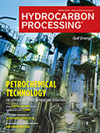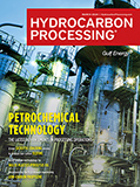Europe
Russia begins diesel exports to Sudan
Russia has begun diesel exports to Sudan as Moscow seeks new markets for its refined products after an EU embargo.
Trafigura consortium in talks to buy Exxon oil refinery in France
Rhone Energies, a consortium of commodity trader Trafigura and Entara LLC, is in exclusive negotiations with Exxon Mobil's ESSO SAF to acquire the Fos-sur-Mer refinery in southern France and the Toulouse and Villette de Vienne terminals.
Kent plays integral role In ExxonMobil's investment In Fawley UK petrochemical complex
Kent, a leading global engineering and project management company, announced its significant involvement in ExxonMobil's $1.04-B investment in its Fawley petrochemical complex.
Avril expects biofuel-driven profit surge by 2030
French oilseeds group Avril expects its core profit to increase by over half by the end of the decade as its crop-based food, fuel and industrial products meet demand for lower-carbon goods.
Russia's Orsk refinery declares force majeure on fuel supply due to floods
Russia's Orsk oil refinery, which has halted output after widespread floods, declared force majeure on fuel supplies from April 8, according to a document issued by plant owner Forteinvest.
Borealis invests $4.95 MM in Porvoo steam cracker
Borealis announced a $4.95 MM investment in the cracker furnaces of its olefins unit in Porvoo, Finland.
Singapore’s EU ETS liabilities of $363 MM can accelerate green shipping initiatives
Singapore-registered vessels will be required to contribute a significant $363 MM share of Asian shipping’s total emissions liabilities under the EU ETS, underlining the importance of the Lion City as a key maritime hub for both global trade and decarbonization.
OCP and Fortescue to partner to develop green energy, hydrogen and ammonia in Morocco
OCP Group and Fortescue Energy announced a landmark JV in Morocco which aims to supply green hydrogen, ammonia, and fertilizers to Morocco, Europe, and international markets.
Bureau Veritas awards Approval In Principle for methanol dual fuel system to Sasaki Shipbuilding
Bureau Veritas has granted an Approval in Principle to Sasaki Shipbuilding Co., Ltd for its methanol dual fuel system applied in a 9,000 DWT General Cargo Ship.
German coalition agrees financing details of hydrogen network
Germany's ruling coalition agreed a financing mechanism for the country's future hydrogen network, extending a deadline for it to be built by five years to 2037 and offering protection for investors in case of bankruptcy.

- Renewable fuels project in Canada begins production 4/19
- Jet fuel demand growth lags as air traffic exceeds pre-pandemic level 4/19
- Jet2.com to use SAF at London Stansted Airport 4/19
- Neste and New Jersey Natural Gas target reducing greenhouse gas emissions with Neste MY Renewable Diesel 4/19
- Cepsa and Evos join up for green methanol storage in Spain and the Netherlands 4/19
- Russia's Bashneft oil company installs anti-drone nets to protect refineries 4/19




